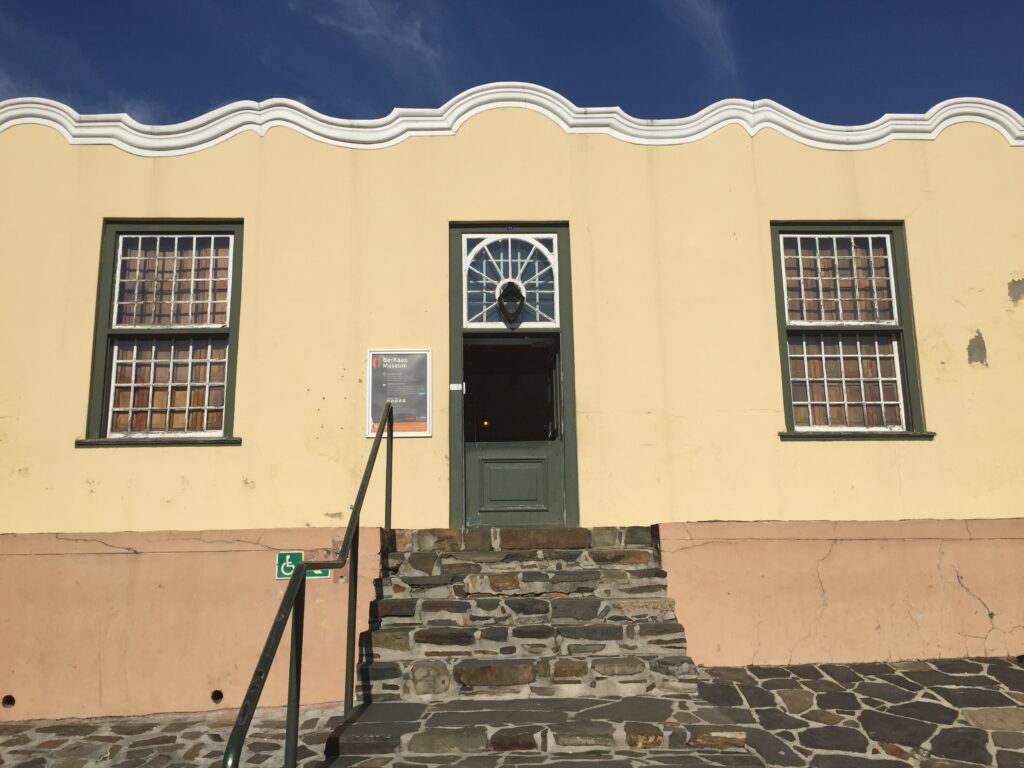The Bo-Kaap Museum in Cape Town
Table of Contents

In a world of ever-increasing globalization, the preservation and appreciation of unique cultures and their histories is of paramount importance. This is particularly true in places where such heritage has undergone numerous challenges and transformations. South Africa, with its complex historical fabric, represents a rich tapestry of cultural narratives, each one playing an integral part in shaping the nation’s identity. Among these narratives, the story of the Cape Malay community, as encapsulated in Cape Town’s Bo-Kaap Museum, holds a significant place.
The Bo-Kaap Museum, standing as a beacon of cultural resilience amidst the colorful backdrop of the Bo-Kaap neighborhood, offers an insightful exploration into the life, history, and traditions of the Cape Malay community. It is more than a museum; it is a bridge to the past, a celebration of the present, and a gateway to the future. This article delves into the vibrant world of the Bo-Kaap Museum, painting a comprehensive picture of its historical significance, architectural marvel, engaging exhibits, community role, and future aspirations. This exploration underlines the importance of the Bo-Kaap Museum not just as a tourist attraction, but as a living, breathing testament to the Cape Malay heritage within the broader South African context.
The Bo-Kaap Museum
The Bo-Kaap Museum, nestled in the vibrant and colorful Bo-Kaap district of Cape Town, South Africa, serves as a gateway to understanding the rich cultural heritage of the Cape Malay community. The museum, established in the 1970s, provides visitors a glimpse into the life of a typical Cape Malay family in the 19th century.
Inside the tranquil, understated façade of the museum, visitors are welcomed into a world that beautifully encapsulates the traditions and customs of the Cape Malay people. The museum not only preserves the tangible artifacts of this community, but also brings to life the intangible legacy of its resilience and spirit.
History of the Bo-Kaap Area
Bo-Kaap, with its cobblestone streets and brightly painted houses, is an area that holds a significant place in South African history. Originally known as the Malay Quarter, Bo-Kaap is one of the oldest residential areas in Cape Town. Its residents, the Cape Malays, are descendants of the slaves brought to the Cape by the Dutch East India Company during the 17th and 18th centuries.
The area has borne witness to many significant historical events, from the period of Dutch colonial rule to the years of apartheid and the struggle for democracy. The Bo-Kaap Museum plays a crucial role in recording and preserving this rich history, illuminating the narratives that have shaped this vibrant community.
The Museum Building
An Architectural Marvel
The Bo-Kaap Museum building is an attraction in itself. Housed in one of the oldest buildings in the area, it exemplifies the traditional Cape Dutch architecture, characteristic of the 18th and 19th centuries. It stands as a testament to the architectural heritage of the period, with its gabled façade and thatched roof.
Inside, the layout is typical of a 19th-century Muslim house, with a front room or ‘voorhuis’ used for special occasions, and a back area for everyday family activities. The building has been meticulously restored to maintain its historic charm, while providing a fitting backdrop to the museum’s exhibits.
Inside the Bo-Kaap Museum
Stepping inside the Bo-Kaap Museum is like taking a journey back in time. The museum showcases a wide array of artifacts and exhibits that give an insight into the everyday life of a Cape Malay family in the 19th century. These include traditional furniture, household items, photographs, and historical documents.
Special exhibits also delve deeper into the cultural heritage of the Cape Malay community. These explore aspects such as traditional Cape Malay cuisine, music, and craftsmanship. The displays effectively narrate the story of the Cape Malays, offering a comprehensive understanding of their history and cultural identity.
Exploring the Cape Malay Culture
The Bo-Kaap Museum serves as a platform for the exploration and celebration of Cape Malay culture. The Cape Malay community has a distinct identity, shaped by diverse influences, ranging from Southeast Asian to African and European.
A visit to the museum reveals the richness of Cape Malay traditions, from their distinctive style of dress and cuisine to their religious customs and linguistic heritage. An exhibit dedicated to Cape Malay music, showcasing the traditional ‘goma’ drums and ‘ghadja’ dance, is a testament to the community’s vibrant cultural expressions.
The Bo-Kaap Museum’s Role in Community Engagement
The Bo-Kaap Museum is not just a repository of historical artifacts but also a hub for community engagement. It plays a crucial role in bringing together the residents of Bo-Kaap and promoting cultural understanding. The museum organizes a variety of events, including heritage day celebrations, workshops, and community meetings.
By involving the local community in its initiatives, the museum ensures that the cultural heritage of the Cape Malays is not just preserved but also lived and experienced. It provides a space for the younger generation to connect with their roots and learn about their ancestors’ resilience and achievements.
Special Events and Programs at the Bo-Kaap Museum
The Bo-Kaap Museum hosts a range of special events and programs, aimed at fostering cultural appreciation and engagement. These include temporary exhibitions, guided tours, educational workshops, and cultural festivals.
For instance, the museum’s annual Cape Malay Cultural Festival is a popular event that attracts locals and tourists alike. The festival features traditional Cape Malay music performances, food stalls serving delicious Cape Malay cuisine, and craft workshops where visitors can learn traditional crafts like beadwork and embroidery.
Visitor Information
Hours, Tickets, and Location
Located at 71 Wale Street, the Bo-Kaap Museum is easily accessible from different parts of Cape Town. The museum is open from Monday to Saturday, offering ample opportunity for visitors to explore its exhibitions and attend its events.
Tickets can be purchased at the museum’s entrance, with discounts available for students and senior citizens. For more detailed information about opening hours, ticket prices, and upcoming events, visitors are encouraged to check the museum’s official website or contact the museum directly.
The Bo-Kaap Experience
Stories from Visitors
Over the years, the Bo-Kaap Museum has left a profound impact on its visitors. Many leave with a newfound appreciation for the Cape Malay culture and a deeper understanding of South Africa’s diverse heritage. Personal stories from visitors add a unique perspective to the museum experience.
One visitor recalls being deeply moved by the history of the Cape Malays, as told through the museum’s exhibits. Another visitor highlights the museum’s role in fostering a sense of community, mentioning the warm welcome they received from both the museum staff and the local residents.
Beyond the Museum
Exploring the Bo-Kaap Neighborhood
A visit to the Bo-Kaap Museum is incomplete without exploring the surrounding Bo-Kaap neighborhood. Known for its brightly painted houses and steep, cobblestone streets, the area exudes a charm that is uniquely its own.
Bo-Kaap is also home to a number of other historic sites, such as the Auwal Mosque, the oldest mosque in South Africa. Local eateries serve delicious Cape Malay cuisine, providing a culinary adventure that complements the cultural journey at the museum.
The Future of the Bo-Kaap Museum
The Bo-Kaap Museum continues to evolve in its mission to preserve and celebrate Cape Malay culture. Plans for the future include expanding the museum’s collection, hosting more community events, and introducing new educational programs.
By constantly evolving, the museum aims to ensure that the legacy of the Cape Malays continues to inspire future generations. It remains committed to its role as a guardian of the Cape Malay heritage and as a hub for cultural exchange and understanding.
Conclusion
The Importance of the Bo-Kaap Museum in South African Heritage
In conclusion, the Bo-Kaap Museum plays a vital role in South African heritage, preserving the history and culture of the Cape Malay community. By offering a window into the life and times of the Cape Malays, it fosters a deeper understanding of South Africa’s multicultural identity.
The museum not only tells the story of the Cape Malays, but also inspires visitors to reflect on themes of diversity, resilience, and shared heritage. It stands as a testament to the enduring spirit of the Cape Malay community and their significant contribution to the fabric of South African society.
